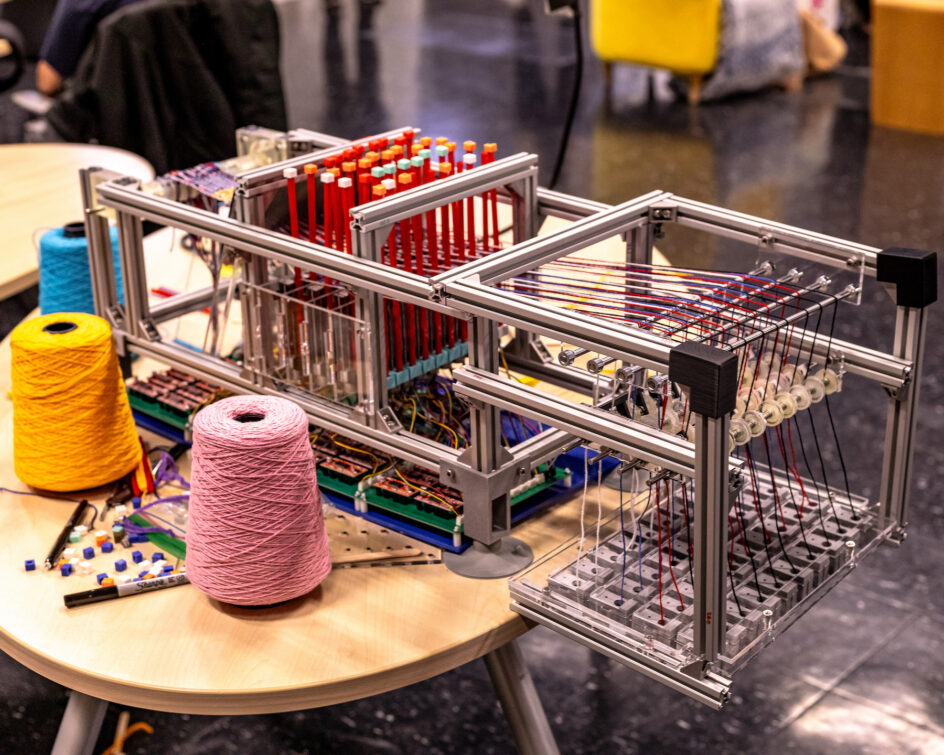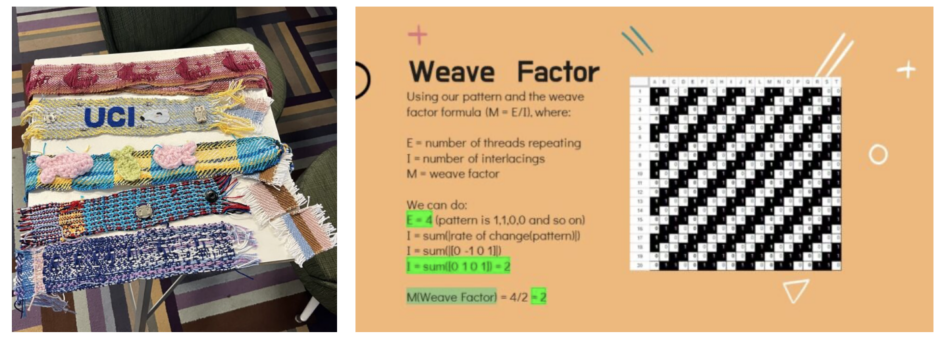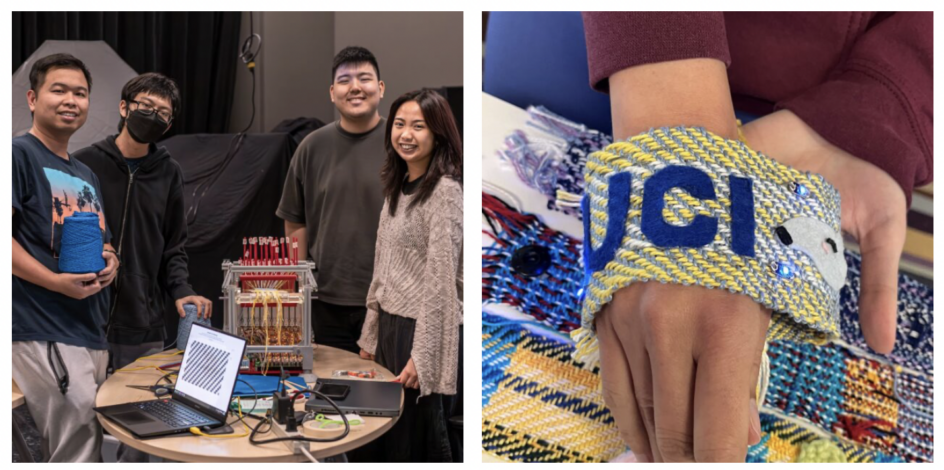‘Recrafting Soft Technologies’ Course Offers Tangible Lessons in Computer Science
Yarn isn’t something most people associate with computer science curriculum, but “ICS 190: Recrafting Soft Technologies” isn’t your typical computer science course. Students start by building an open-source, software-enabled robotic loom kit, called Robo-Loom, and they conclude the course with a team-based weaving project.

“This [course] provided a fresh perspective on technology,” says third-year informatics major Duy Le. “What I liked best was the opportunity to build the looming machine and create creative fabric. It was a hands-on project that allowed me to apply the knowledge gained in the course to a tangible and exciting creation.”
Offered to undergraduate students at UC Irvine in spring 2023, the new course in the Donald Bren School of Information and Computer Sciences (ICS) was the result of $1.5 million National Science Foundation grant led by Informatics Professor Kylie Peppler in collaboration with Professors Melisa Orta Martinez and Carolyn Rosé of Carnegie Mellon University. As outlined in the grant abstract, the goal was to move traditional computer science curriculum “beyond the screen and back to its tangible roots.”
“The curriculum foregrounds the inherently interdisciplinarity nature of computational thinking,” says Peppler, “and encourages critical reflection with respect to the role of women and people of color in computer science, robotics and art history.”
Tangible Learning
The focus on weaving helps bridge the gap between abstract ideas and hands-on learning, thereby broadening participation in STEM. “I wanted to design a course that challenges the normative ways of teaching math and teaching computer science,” says Nikki Yankova, a Ph.D. student in the School of Education who taught the class at UCI with Peppler. “Weaving is very algorithmic,” she says. “We were thinking about four core areas — math, programming, engineering and the arts — and this idea of interdisciplinary collaboration.”

Robo-Loom has a graphical user interface that students can use to control the loom and explore mathematical concepts related to weaving. For example, students can explore their cloth’s integrity and weave factor before beginning to weave. Throughout the quarter, applying lessons learned in metrics math, mechatronics, computational thinking and weaving, students worked in teams to complete the following projects:
- a red scarf with a crescent moon design for the lunar new year;
- a UCI wristband with four LED lights weaved into the fabric to represent each of the four team members;
- a headband with UCI colors that lights up for users to wear at night (with crocheted fish representing team members from “across the sea”);
- a wristband with a turquoise fishtail design and an LED light in the center;
- a blue sash to wear at UCI graduation; and
- four coasters representing cultural significance.
“I was really impressed with the quality and also variety of projects,” says Peppler.

Le, who worked on the UCI wristband, appreciated branching out from theoretical concepts to engage in interdisciplinary, hands-on learning. “By combining different fields of study, we can gain a more holistic understanding of how various disciplines interact and contribute to the world,” he says. “It also fosters creativity and critical thinking, preparing students to tackle complex challenges in their future careers.”

A New Model for Education
A variety of educators have expressed an interest in the experimental course. “Local Orange County high schools want to sign up and be part of this,” says Peppler, who plans to start with a pilot project at Woodbridge High School in Irvine that will involve having students use the loom to create props for the school’s theater department. “There will probably be some tweaks in the curriculum, as you might expect, but also some new robo looms that will be hopefully larger and easier to assemble.” Math teachers at César E. Chávez High School in Santa Ana, an alternative high school, have also expressed an interest in this novel project-based approach based on weaving.
Furthermore, Peppler hopes to teach this as her graduate-level “Arts, Making, and Engineering”
elective class this winter in informatics and education. “There couldn’t be a more perfect class for this project,” says Peppler. “The amount of learning around not just introductory physics and engineering but also mechanical engineering and robotics is so complex, and students will have to work in teams and collaboratively with folks.”
Clearly, the course has the potential to accommodate a wide variety of students. The focus on electronic textiles could serve as an introduction to computational thinking, encouraging high school students to consider studying a STEM field, or it could help advance interdisciplinary and collaborative STEM learning in undergraduate- and graduate-level courses.
“The hypothesis was that we would put the loom together, and it would sort of heighten the experience of all of these different domains,” says Peppler. “The students really, really enjoyed that. It was fun to see a lot of our design hypotheses actually fall into fruition. We saw lots of collaborative work, and we saw lots of interdisciplinary work. I think we stumbled on a new model for higher education in general.”
— Shani Murray